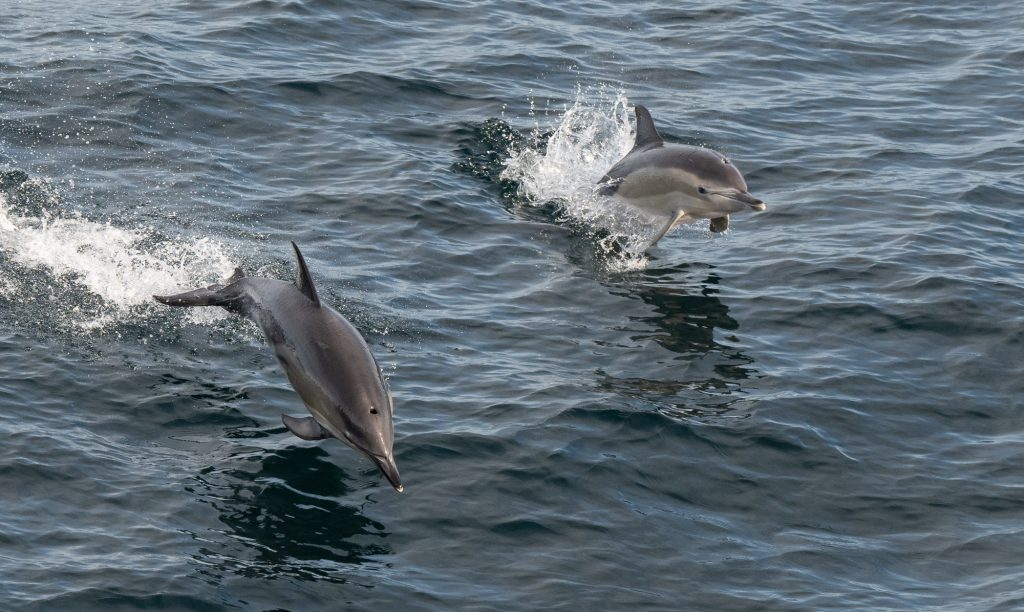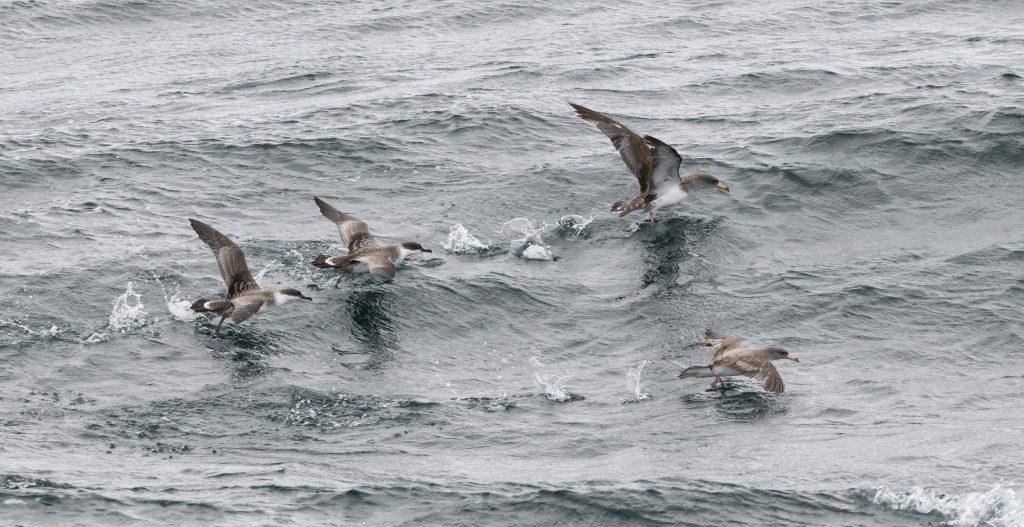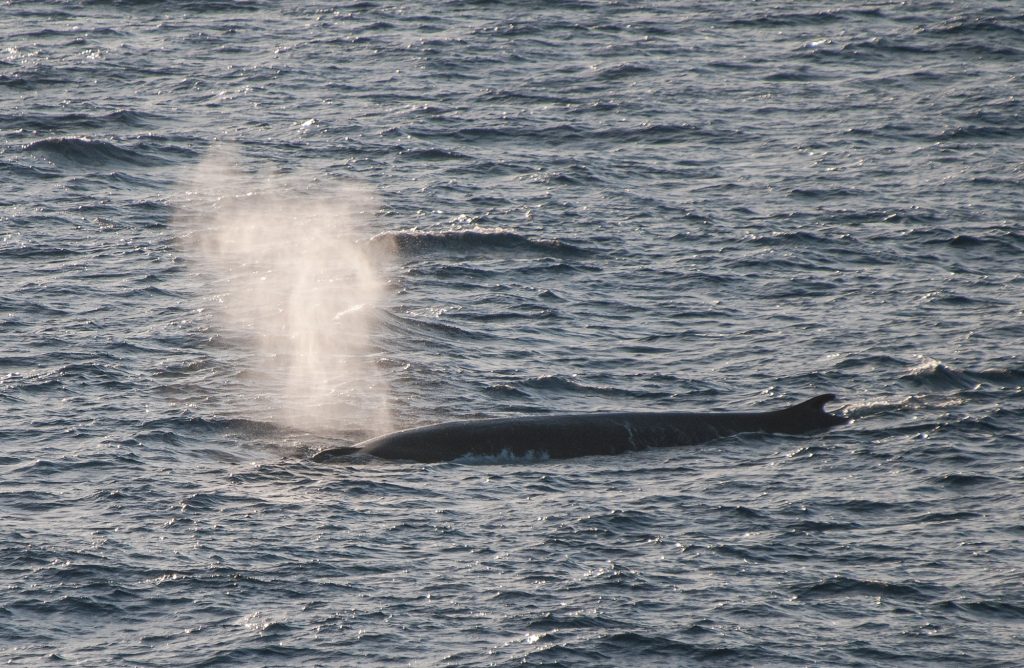 PELTIC 2025 – 13 October
PELTIC 2025 – 13 October
13 October 2025
After five days of flat seas our luck had to come to an end. When we arrived on the bridge there was a 1 metre swell and a sea state between 4 and 5 for the first transect, number 49. The word was we were going to go through this and the next transect with no break for trawling – we’ll believe that when we see it.
The birds came slowly throughout the morning. As usual mainly Gannet and various gulls, there were a few notable birds such as a couple of sightings of Balearic Shearwater and a few of Manx Shearwater but otherwise variety was in short supply. Rather annoyingly, a Cattle Egret was seen aft of the ship, but when on survey we can only count birds seen ahead of us, so this one couldn’t be counted. A Redwing landing briefly on board added to our passerine species.

Just before the end of the transect two small pods of Common Dolphin had a quick bow ride. This took us to lunch, nicely timed. After a quick lunch we were back on the next transect, 31, just after 12:00.
We had thought the previous transect was slow but this one proved to be even slower. After 1 ½ hours we had recorded a grand total of eight Gannet and a Kittiwake. We were in the wildlife doldrums, two hours later the count had increased by another 15 birds. The birds were playing a game of you don’t see me.
Doldrums is a term known to sailors round the world. It refers to the Inter-Tropical Convergence Zone (ITCV pronounced and referred to as “the itch”). It’s a belt round the earth roughly 5o either side of the equator where the two trade winds, north and south, collide. Due to the intense solar heat the air rises so there is little surface wind where sailing ships can be calmed for weeks.

But wait the fat lady has not sung. What’s going on ahead of the ship, there’s a swarming mass of birds. These turned out to be a mixture of Gannet, and Great and Cory’s Shearwater. These were the first Great and Cory’s Shearwaters seen on the survey and it was extremely difficult counting them as the swarmed passed the front of the ship but there were in the region 200 shearwaters and 50 Gannet. Just as well there were two of us to count those swirling birds.
There was a second encounter 10 minutes later with 50 more Great Shearwater and large numbers of Gannet, Kittiwake and various other gulls. Oh yes, and a sole Chaffinch checked in to the Endeavour Hotel.
The cetaceans followed a similar pattern. In the first 3 hours we only saw one small group of Common Dolphin. Just before the large bird encounters we started to see a few more. The encounters with Common Dolphin then kept coming at regular intervals until the end of the transect. There were also a number of tuna seen feeding with the birds.

The final act of the transect started when the 1st Officer said he thought he had seen a whale blow. There was general disbelief as we were so close in shore. “It’s nowhere man” was heard from some of the other onlookers. However, he was proved to be right as a Fin Whale was seen passing the ship headed up by a few Common Dolphin. There was possibly a second whale but this was not confirmed.
So, what have we learnt today:
• Believe what the 1st Officer tells you
• It definitely is a game of two halves
• You don’t want to get into the Wildlife Doldrums

